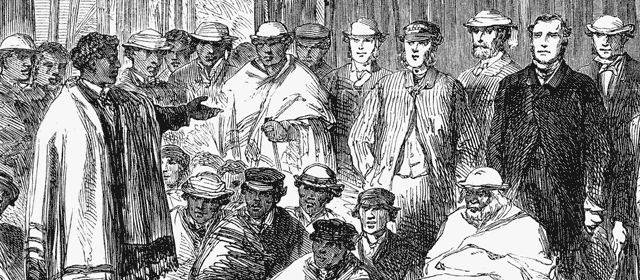Story summary
Māori affairs to 1840
In the early 19th century Māori were keen to engage with Europeans. Britain only intervened to preserve order so that trade and industry could develop.
In 1832 James Busby was appointed British Resident and instructed to set up a government of Māori, by Māori.
New Zealand became a British colony in 1840, when Te Tiriti o Waitangi (the Treaty of Waitangi) was signed between the Crown and Māori. The Māori-language version promised Māori that they would retain control over their resources and customs, but the English version did not state that the Crown would share sovereignty with Māori.
1840s and 1850s
After the treaty was signed, Governor William Hobson appointed a protector of aborigines to protect Māori from the harmful effects of settlers, advise the governor on Māori issues and buy Māori land.
George Grey became governor in 1845. He abolished the protectors of aborigines and dealt with Māori himself.
When New Zealand became self-governing in 1854, all adult males owning property worth a certain amount were able to vote – but most Māori land was communally owned, so few Māori could vote. Māori set up rūnanga (tribal councils), but these were not officially recognised.
1860s to 1920s
In 1858 Māori formed the Kīngitanga (Māori King movement) to unite tribes, give Māori more authority and prevent further land sales. In 1861 Grey proposed a system of native government with 20 Māori districts. However, few were set up.
In the 1880s the government adopted a ‘one people’ policy and made fewer special provisions for Māori. In 1892 the Native Department was abolished. It was re-established in 1906 by Māori MP James Carroll.
1930s to 1960s
During the 1930s economic depression, under Native Minister Apirana Ngata, the Native Department developed tribal land and Māori housing.
The Maori War Effort Organisation worked with the department during the Second World War to recruit troops and support the war effort.
In the 1940s the Native Department’s name was changed to Maori Affairs Department. A national Maori Council was set up in 1962.
1970s to 2000s
In 1975 the Labour government set up the Waitangi Tribunal to hear claims of breaches of the treaty. From 1985 the tribunal could deal with claims dating back to 1840, and resources were transferred back to some tribes as compensation. Government departments had to take treaty principles into account.
Initiatives such as kōhanga reo (Māori-language preschools) were set up.
The Māori Affairs Department was replaced by two temporary agencies in 1980, and then in 1992 by Te Puni Kōkiri.





